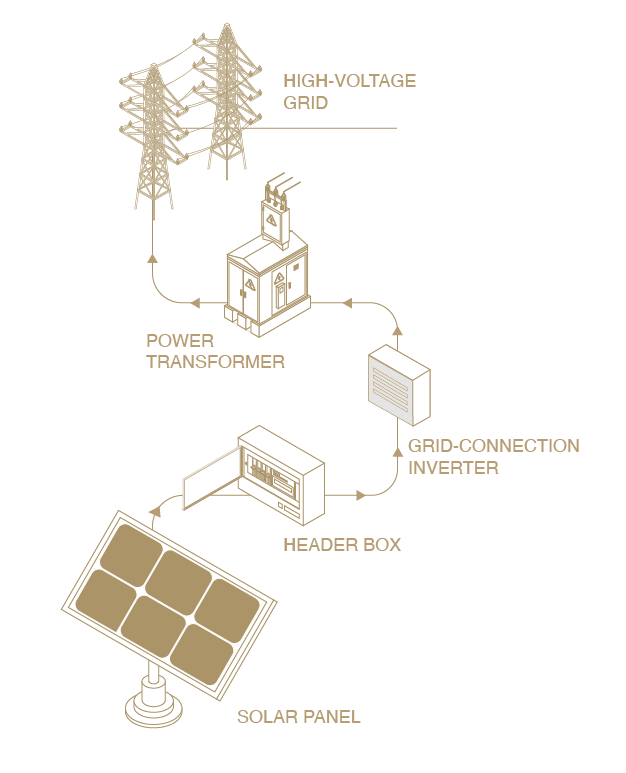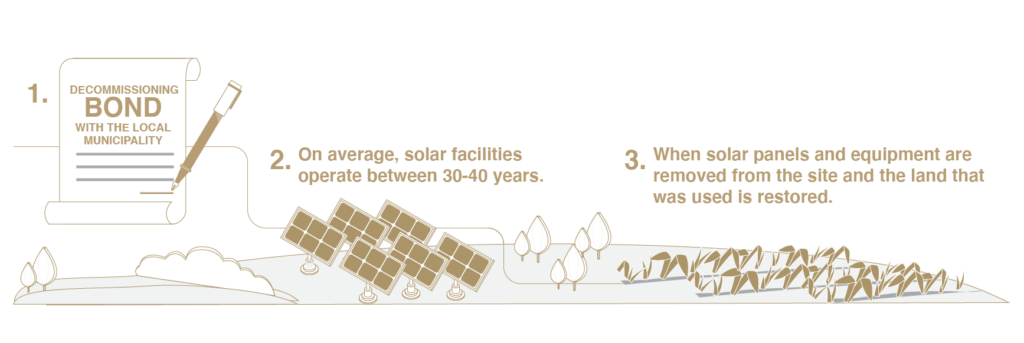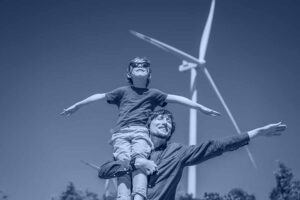Solar Energy
We understand landowner concerns of large-scale solar projects and we strive to highlight polices that protect these rights while providing reliable solar energy to meet customer demand.
Solar Energy Projects At-a-Glance
Solar developers obtain voluntary lease agreements or option to purchase from landowners.
Solar projects must first receive an approval for construction in a desired area. Typically, an application is first reviewed by the local zoning board. Development agreements between the solar developer and the relevant local jurisdiction are reviewed by local elected officials, with input from the community.
Zoning – Aspects to Consider
Setbacks
-
Participating
-
Non-participating
-
Right to Waive
Screening
-
Fencing
-
Trees
Vegetation
-
Appropriate seed mixes
-
Local input
Important Development Agreements
Economic Development Agreement
Road Use and Ditch Maintenance Agreement
Vegetation Plan
Decommission Plan
After approval from local regulatory and government officials, the solar facility can begin construction. The site is prepared, and developers begin cut and fill operations to space panels appropriately. Workers transport tools and equipment and typically take one year or more to finish building the solar farm.
Revegetation is started once the facility is completed to help prevent erosion, manage storm water, and support the surrounding ecosystem. Native grasses and pollinators are often used.
How Solar Panels Convert Sunlight Into Electricity

Decommissioning

On average, solar facilities operate between 30-40 forty years.
The decommissioning process is usually agreed to before the solar permit is granted, and developers typically post a decommissioning bond to hedge against unforeseen or unfortunate circumstances.
At the end of the project the solar panels and equipment are removed from the site and the land that was used is restored. The solar panels are made mostly of recyclable material, and so they are either reused or sold off.
Solar & Agriculture Working Together
Solar facilities provide a new source of income for farmers. They can lease part of the land, allowing it to rest and recover while they continue to farm the rest.
Income from solar leases provide financial security for the farmer, with income not dependent on global grain prices, trade policy or the weather. Solar is another way to earn a living from the land; the farmer is harvesting the sun.
Solar companies must remove all equipment and restore the land at the end of the project, so it can be returned to agriculture if the land owner wishes.
- An emerging practice called Agrivoltaics involves running a solar farm while simultaneously growing crops and plants. The process involves having sensitive crops grow in the shade of the solar panels. The shade protects the delicate crop and enables less watering.
- Shade from solar panels have been shown to positively affect cattle and livestock. Because solar panels are typically elevated, animals can graze underneath them.




